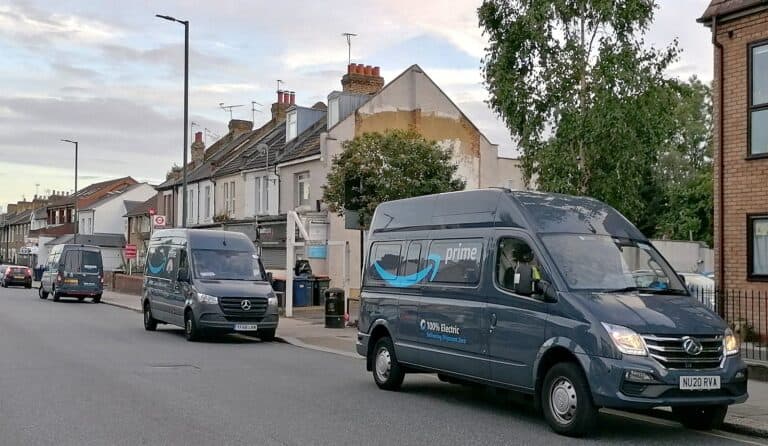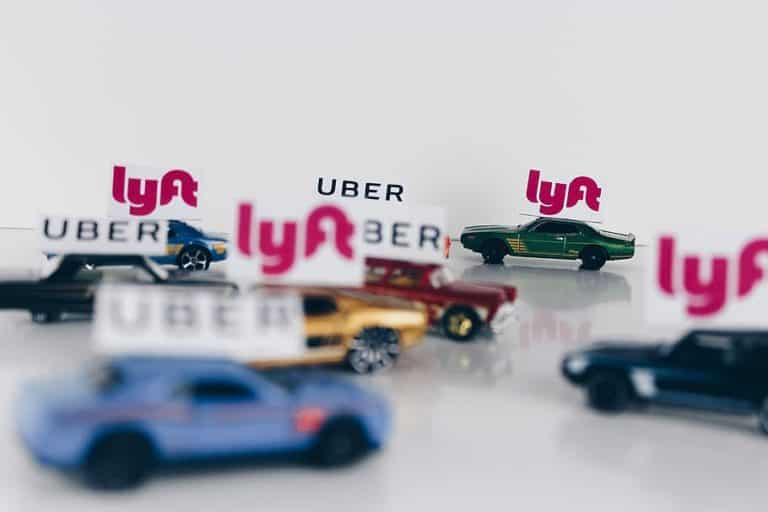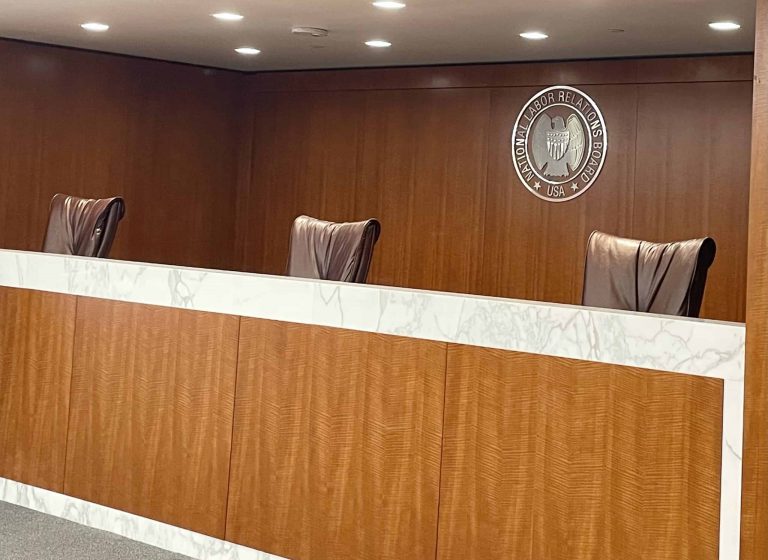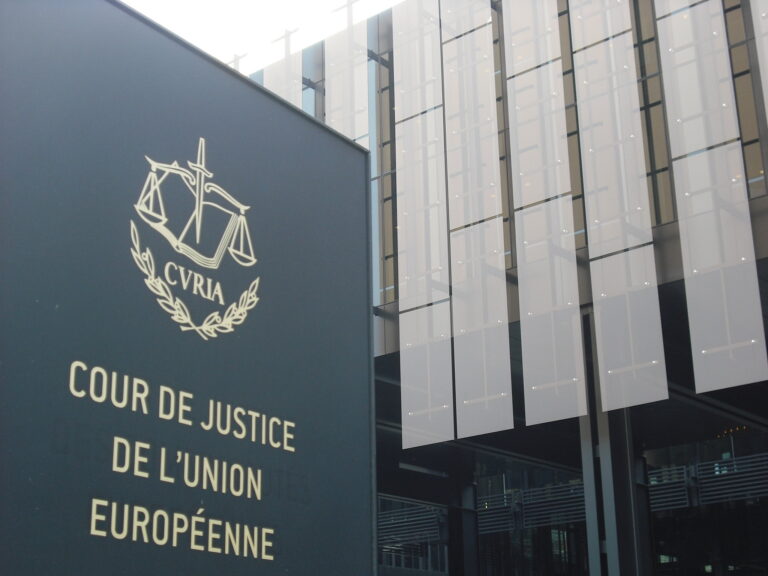Jon Weinberg is a student at Harvard Law School.
Judge Robert S. Lasnik of the U.S. District Court for the Western District of Washington has enjoined enforcement of Seattle’s first-in-the-nation ordinance giving gig economy independent contractors the right to unionize (the “Ordinance”.) Judge Lasnik’s full decision granting the U.S. Chamber of Commerce’s motion for preliminary injunctive relief in Chamber of Commerce of the United States of America v. City of Seattle can be found here. Uber, Lyft and a third ride hailing company had been due to submit driver information this week to a union recognized as a “qualified driver representative” pursuant to the Ordinance, but the requirements “are hereby enjoined until this matter is finally resolved.”
Notably, Judge Lasnik found that the Chamber may succeed on the merits of its antitrust claim, pending analysis of the City’s claim for antitrust immunity, but that the Chamber and drivers challenging the Ordinance in a consolidated lawsuit are unlikely to succeed on their National Labor Relations Act preemption claims at the moment. Judge Lasnik stressed “that this Order should not be read as a harbinger of what the ultimate decision in this case will be when all dispositive motions are fully briefed and considered. The plaintiffs have raised serious questions that deserve careful, rigorous judicial attention, not a fast-tracked rush to judgment based on a date that has no extrinsic importance.”
Antitrust Claim
First, Judge Lasnik considered the Chamber’s contention that the Ordinance violates the Clayton Act. He noted that the Chamber is likely to satisfy the relevant test to be able to sue on behalf of its members (Uber, Lyft and the third ride hailing company) and that “one can reasonably infer that the Ordinance will reduce, if not extinguish, any variability in the terms and conditions on which for-hire drivers offer their services to the driver coordinators,” thus “the anticompetitive potential of all price-fixing agreements is likely to arise and may justify facial invalidation of the Ordinance without the need for [the third company], Uber, and/or Lyft to be party to this litigation.”
Judge Lasnik stressed that “whether the Chamber will succeed on the merits of its antitrust claim is unclear” and predicated on an analysis of the City’s claim of antitrust immunity. He found that the Chamber raised valid questions with respect to both prongs of the relevant municipal immunity analysis, namely a) whether the ordinance reflects clearly articulated and affirmatively stated State policy, and b) whether there is active State supervision of the ordinance. Both are necessary for the City to enact an ordinance that would otherwise violate the Clayton Act. Judge Lasnik concluded that “the novelty of the City’s claim for antitrust immunity, the potential absence of any state oversight of the agreements, the lack of any evaluation of competitive effect, and the potential impact on an important transportation option for thousands of Seattle residents and visitors cannot be ignored.”
NLRA Preemption Claim
On the other hand, Judge Lasnik found that the Chamber is unlikely to show that the Ordinance is unlikely to be found to be preempted by the National Labor Relations Act. He articulated that the Ordinance does not likely fall within the scope of the NLRA (“Garmon” preemption) or regulate conduct Congress intended to leave unregulated (“Machinists” preemption) and so is not likely preempted.
“Garmon” Preemption
With respect to “Garmon” preemption, Judge Lasnik stated that since the Chamber has “taken the position that the for-hire drivers covered by the Ordinance are independent contractors and not subject to the NLRA,” it follows that the issue of NLRA classification will not be resolved or addressed by the litigation. In any event, he notes that were the issue of classification raised, the individual companies (and not the Chamber) would need to participate in the legal challenge, as the Chamber would lack standing because classification “depends on the details of the relationship between a specific driver coordinator and its drivers, including numerous factors such as the degree of control the coordinator exercises.”
Additionally, driver plaintiffs challenging the Ordinance in a consolidated case argued that the Ordinance is expressly preempted by NLRA § 8(e) in that it set up “union shop” agreements, but Judge Lasnik dismissed the challenge as premature, noting that “neither the factual readiness of the issue for adjudication nor the potential hardships that would be caused by awaiting the negotiation of the contract terms justify the exercise of jurisdiction at the moment.” The driver plaintiffs also asserted preemption by NLRA § 8(b)(4) in that the Ordinance fostered an unfair labor practice of coercion, but concluded the claim was also not ripe for resolution.
“Machinists” Preemption
With respect to “Machinists” preemption, Judge Lasnik stated that “the Court must determine whether the Chamber is likely to show that the exclusion of independent contractors represents a congressional determination that workers in that category should be prevented from bargaining collectively, as opposed to evidencing a willingness to allow state regulation of the balance of power between independent contractors and those who hire them” since the NLRA regulates collective bargaining by employees and not independent contractors.
Judge Lasnik reviewed the relevant case law, statutory text, and legislative history. He concluded that independent contractors are excluded from the meaning of “employee” under the NLRA, and that the NLRA treats independent contractors not like supervisors (who have been excluded from the NLRA because their unionization was seen as a threat to the free flow of goods and union independence from management,) but rather like other excluded groups of workers long regulated by the state. He thus found no likely preemption because ” it is at least as likely, if not more so, that Congress was indifferent to the labor rights of independent contractors – just as it was to the rights of agricultural and domestic workers – because their disputes were thought to be of insufficient magnitude to affect commerce.”
Other Claims
Finally, Judge Lasnik addressed other claims by drivers challenging the Ordinance in the consolidated case. First, he found no need for a preliminary injunction to address a First Amendment challenge, because of no threat of irreperable harm.
He did, however, more thoroughly consider driver claims of preemption by the Driver’s Privacy Protection Act, which “precludes a state department of motor vehicles from disclosing personal information obtained about an individual in connection with a motor vehicle record unless the information is sought for a permissible purpose” and “makes it unlawful for private actors to knowingly obtain or further disclose ‘personal information, from a motor vehicle record, for any use not permitted’ by the statute.” Judge Lasnik found that “although the purposes of the statute strongly suggest that the source of the personal information must be taken into consideration when evaluating a DPPA, the [driver] plaintiffs have raised serious questions regarding its application in this case.”
Conclusion
Judge Lasnik concluded by considering claims of irreparable harm to the drivers and companies of requiring enforcement of the Ordinance, finding that balancing the hardships favored enjoining enforcement because “against the likelihood of competitive injury caused by the disclosure of a subset of prolific drivers and the potential destruction of the existing business model, the City has not articulated any harm that will arise from an injunction other than that it would delay the implementation of the Ordinance according to its internal time line.”
He acknowledged the novel public interests at stake with the first-in-the-nation ordinance, stating “that the issues raised here may well impact not only for-hire transportation, but also other sectors of the economy that have come to rely heavily on independent contractors instead of employees,” but ultimately found “the public will be well-served by maintaining the status quo while the issues are given careful judicial consideration as to whether the City’s well-meaning Ordinance can survive the scrutiny our laws require.”










Daily News & Commentary
Start your day with our roundup of the latest labor developments. See all
December 22
Worker-friendly legislation enacted in New York; UW Professor wins free speech case; Trucking company ordered to pay $23 million to Teamsters.
December 21
Argentine unions march against labor law reform; WNBA players vote to authorize a strike; and the NLRB prepares to clear its backlog.
December 19
Labor law professors file an amici curiae and the NLRB regains quorum.
December 18
New Jersey adopts disparate impact rules; Teamsters oppose railroad merger; court pauses more shutdown layoffs.
December 17
The TSA suspends a labor union representing 47,000 officers for a second time; the Trump administration seeks to recruit over 1,000 artificial intelligence experts to the federal workforce; and the New York Times reports on the tumultuous changes that U.S. labor relations has seen over the past year.
December 16
Second Circuit affirms dismissal of former collegiate athletes’ antitrust suit; UPS will invest $120 million in truck-unloading robots; Sharon Block argues there are reasons for optimism about labor’s future.